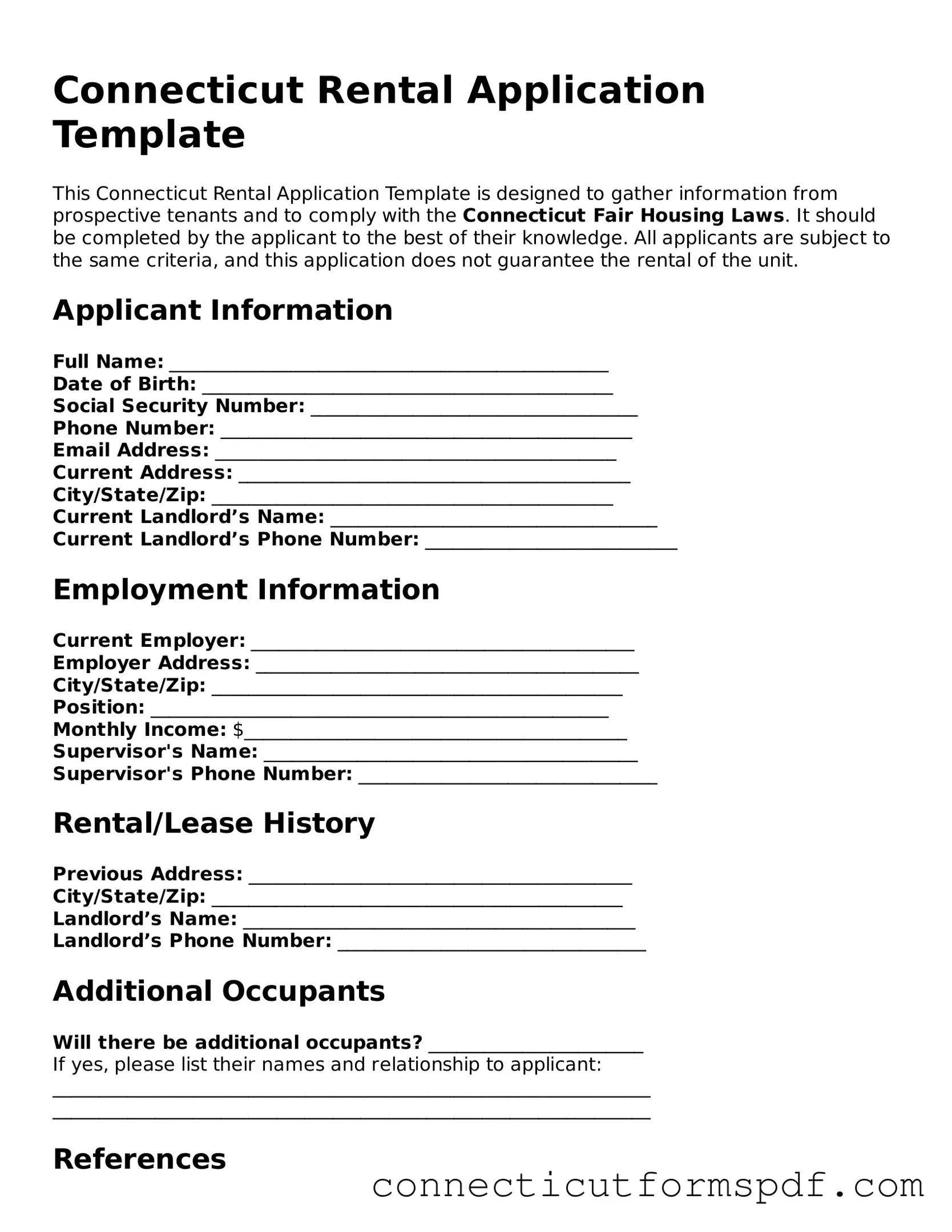Connecticut Rental Application Template
This Connecticut Rental Application Template is designed to gather information from prospective tenants and to comply with the Connecticut Fair Housing Laws. It should be completed by the applicant to the best of their knowledge. All applicants are subject to the same criteria, and this application does not guarantee the rental of the unit.
Applicant Information
Full Name: _______________________________________________
Date of Birth: ____________________________________________
Social Security Number: ___________________________________
Phone Number: ____________________________________________
Email Address: ___________________________________________
Current Address: __________________________________________
City/State/Zip: ___________________________________________
Current Landlord’s Name: ___________________________________
Current Landlord’s Phone Number: ___________________________
Employment Information
Current Employer: _________________________________________
Employer Address: _________________________________________
City/State/Zip: ____________________________________________
Position: _________________________________________________
Monthly Income: $_________________________________________
Supervisor's Name: ________________________________________
Supervisor's Phone Number: ________________________________
Rental/Lease History
Previous Address: _________________________________________
City/State/Zip: ____________________________________________
Landlord’s Name: __________________________________________
Landlord’s Phone Number: _________________________________
Additional Occupants
Will there be additional occupants? _______________________
If yes, please list their names and relationship to applicant:
________________________________________________________________
________________________________________________________________
References
Reference #1
Name: _________________________________________________________
Relationship: _________________________________________________
Phone Number: _________________________________________________
Reference #2
Name: _________________________________________________________
Relationship: _________________________________________________
Phone Number: _________________________________________________
Consent for Background Check
By signing below, the applicant authorizes the landlord to conduct a background check, including but not limited to credit history, rental history, employment verification, and criminal records. The applicant understands that information gathered may be shared with landlords, property managers, and others for the purpose of determining rental eligibility under Connecticut state law.
Applicant Signature: _______________________________________ Date: ______________
Please note, under Connecticut law, landlords may charge a fee for processing rental applications, provided it does not exceed any maximum amount set by law. The fee is non-refundable, even if the application is not approved.
